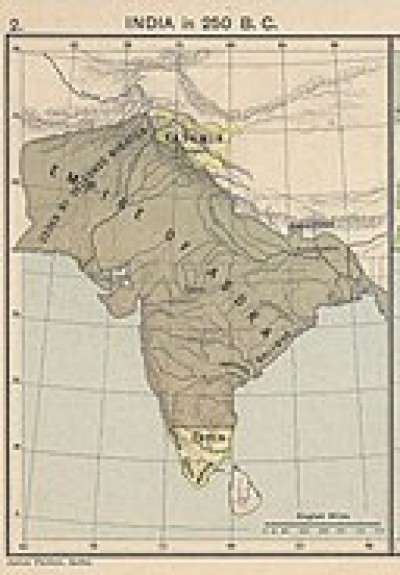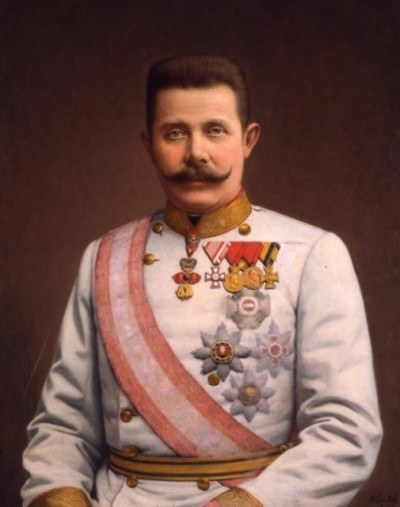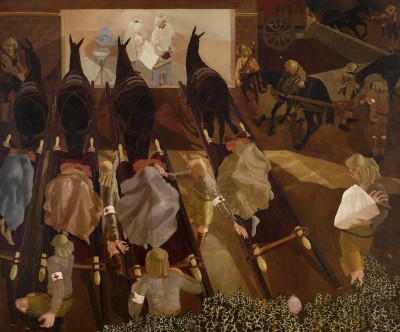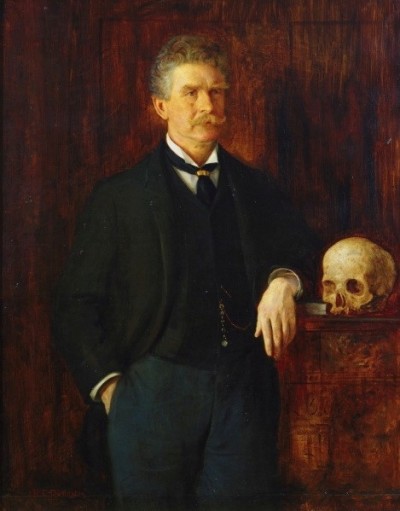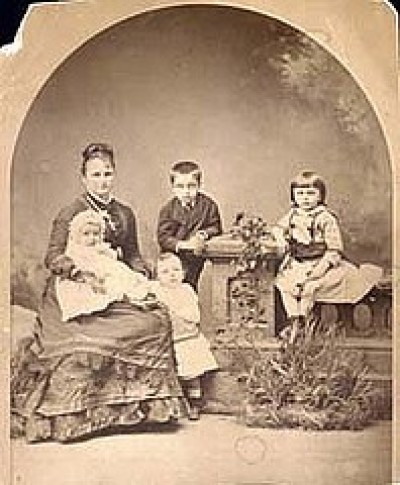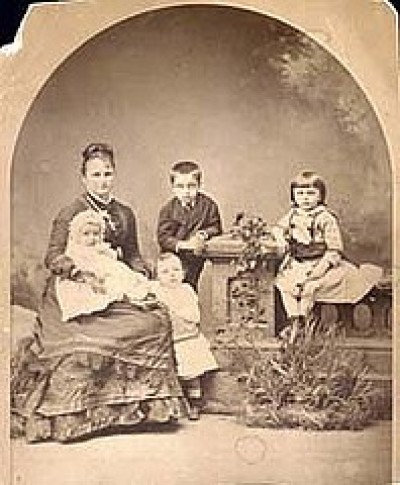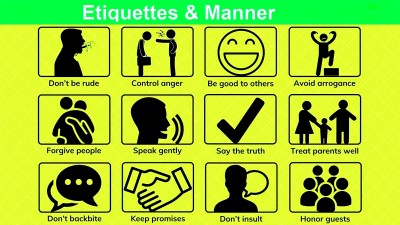Course description
The Mauryan Empire in Bengal

Alexander the Great’s own armies forced him to retreat from Northern India in 324 BC, worried that they would never see their homeland, their families or friends again and prevented the young king from conquering the whole of the Indian sub-continent. But his speedy departure left a power vacuum, as the generals he left behind to rule soon started to fight among themselves. It was Chandragupta Maurya, who founded the Mauryan dynasty that quickly moved in to take advantage of the gap left by Alexander. And it is in Greek historical records that we first learn of his achievements.
However, there is no definite information about the civilizations and prehistoric societies that came before Chandragupta. For evidence of this, we depend on archaeology. But, here too, there are many difficulties, as most buildings and monuments in this region were made of wood and, so, disappeared thousands of years ago. Also, because of the changing routes that rivers took, much of the prehistory may be underwater. It is hard to know, but archaeologists have largely focused on West Bengal and present-day Bihar, as they have had so little luck in Bangladesh. Still, there are a few clues here and there and, from these; we can make clever guesses about what life might have been like three, four thousand years ago or even longer.
WARI-BATESHWAR : user:omarshehab / CC BY-SA (http://creativecommons.org/licenses/by-sa/3.0/)There are prehistoric stones in the Sylhet region – although what they mean or why they were put up we have no idea – and that suggests there were communities in Bangladesh as long ago as 60,000 to 100,000 BC. We also know that there were farming communities around Bogra long before recorded history but we cannot specify when. However, just in the past few decades, due to the interest of a local archaeology enthusiast in Narsingdi, we now know that there were several populations living in the area as long as 4,000 years ago. It seems they might have lived in trenches or pits and certainly used coins (with pictures of boats on), jewelry made of northern black polished ware, glass beads and cooking utensils. Large temples have also been uncovered, which appear to be Buddhist, but pre-date the Buddha – leading us to ask what their religious beliefs might have been. You can visit all these sites around Narsingdi at Wari-Bateshwar. Fascinating!
 512px-BD_Mahasthangarh1.JPG (512×384)Another site of great interest dating back to about 300 BC is Mahasthan, near, Bogra, which was the capital of an ancient kingdom called Pundra. Although most of the site has not been excavated, there are still signs of a Buddhist temple, a king’s palace and much more. It was here that the earliest example of script (or handwriting) was found in stone. The six fragments are from a land contract and are written in Brahmi. They date from the Mauryan Empire.
So, we have now returned to the place where we started this lecture: Chandragupta and the Mauryan Empire. Although there are many historical records of this period, it is worth remembering that many were written hundreds of years after the Empire had collapsed and even those which date from the same period are not necessarily to be trusted, as they often have political or religious messages. As such, the content is dictated by Jain, Hindu or Buddhist agendas or was written to praise the kings, not to provide objective historical records of events.
CHANDRAGUPTA : I, Sailko / CC BY-SA (https://creativecommons.org/licenses/by-sa/3.0)What we know for sure is that Chandragupta came from a poor family. Some say he was the son of a powerful lord but, when his father died, he was given to a cowherd to bring up so as to keep him out of danger. It was while he was playing with other children at that time that his life-long mentor, Chanakya, a Hindu Brahmin, discovered him. Now, it had been prophesied that Chanakya would raise and teach a boy who would become an emperor. Watching the children play and seeing the leadership skills of Chandragupta, Chanakya paid the cowherd to take the boy away. He then made sure that the boy was educated in the holy texts of Hinduism. At a centre of learning in the modern-day state of Karnataka, Chandragupta met the king of the region, called Nanda. The boy became a military commander in Nanda’s army but later insulted his monarch or, according to other sources, Nanda insulted him.
512px-India_in_250_BCE_Joppen.jpg (512×734)Anyway, according to the Roman historian, Justin, writing four hundred years after the event, Chandragupta raised an army of mercenaries and attacked Nanda’s capital. Again, the historical sources differ but one states that Chandragupta was defeated. He learnt from his mistakes, however, when he heard a wife telling her husband off because he had burnt his mouth eating from the middle of a dish. She told him to eat from the outer areas of the curry, where the food was cooler and then slowly to arrive at the centre. Chandragupta realized he had to attack the borders of Nanda’s empire and, gradually, march on the capital. Which he did. Other sources say, however, that the young man’s first attack on the capital was successful. Whether we believe one version or the other, there is a detail on which all accounts are the same: Chandragupta allowed Nanda to ride away with his family and enough money and goods for his needs. His daughter though had fallen in love with the young victor at first sight and stayed behind, married him and helped him to found the first Mauryan Empire.
After Chandragupta had taken control of Nanda’s empire, he and Chanakya turned their attention to the states in northwest India ruled by the Greek generals Alexander had left behind to administer his lands there. He attacked and defeated these rulers and freed the people from Greek slavery, executing many of the governors. He also waged war with Seleucus, whose capital was in Babylon (or modern Iraq), until the two leaders made a pact, with Chandragupta controlling all the lands east of the Indus River, including Kabul and Kandahar (in Afghanistan now). To make their peace treaty more secure, Seleucus and Chandragupta also arranged a political marriage between the Greek’s daughter and (perhaps) Chandragupta’s son, Bindusara (although details are unclear).
MAURYAN ARTEFACT : Nomu420 / CC BY-SA (https://creativecommons.org/licenses/by-sa/3.0)This left Chandragupta free to concentrate on the kingdoms in southern India. We do not know how far he got though. All we can say for certain is that, by the time Ashoka’s reign began, the Mauryan Empire stretched from Bengal in the east to Afghanistan in the west and as far south as modern-day Bangalore.
In the end, Chandragupta passed his empire to Bindusara and became a Jain monk to seek forgiveness for all the misery and death his wars had caused. According to legend – although the Jain texts where this is mentioned were written 1200 years after his death – he starved himself to death.
MAURYAN ARTWe do know, however, that Chandragupta and Chanakya were not just soldiers. They also introduced many reforms in the empire, with careful control over taxes, foreign visits, the development of infrastructure – especially road building – and of foreign trade. The emperor had a council of ministers to advise him, with his old mentor as his Chief Minister. There were standardized weights and measures too for fair trading. What is even more important was that the economy was strong. There was also religious freedom as Buddhists, Jains and Hindus all lived on equal terms in the empire. And the arts, borrowing from Greek techniques and styles, flourished as well. All in all, Chandragupta’s empire seems to have been a well-administered and peaceful one.
The production of weapons was a state monopoly, so that nobody else might threaten the king. Indeed, Chanakya was very careful to guard his master at all times. Even when he went out hunting, he had female bodyguards (who, they thought, were less likely to plot to kill the king). He also slept in a different room every night to trick assassins. Chanakya had not forgotten that Nanda had taken control of his empire by assassinating the former king.
ROCK INSCRIPTIONSChandragupta probably abdicated in 298 BC and died the following year, 297. His reign lasted twenty-six years or so (maybe from 324 or 321 BC). His son, Bindusara ruled for almost as long: twenty-four years from 298 BC to 273, but we know less about him than either his father or his legendary son, Ashoka, as there are fewer documents. We do not even know if Bindusara conquered any lands or whether this was the work of his father or son.
However, there is some evidence from several sources that Bindusara preferred his oldest son, Sushima, to become king after his death, rather than Ashoka, who was ugly and not the son of a princess. Bindusara’s ministers, however, were in favour of Ashoka, first because his mother was a Brahmin and, next, because he appeared more capable than Sushima. An example of this was that Ashoka managed to stop a rebellion by the city of Takhshashila. His father had refused him any weapons but these miraculously appeared as a gift from the gods. As it turned out, the weapons were not needed anyway, as Ahoka managed to persuade the citizens to invite him into their city without the loss of any blood. However, when the city later rebelled again, shortly before Bindusara’s death, Sushima was sent to put down the revolt, but failed.
ASHOKA'S SYMBOL : Chrisi1964 / CC BY-SA (https://creativecommons.org/licenses/by-sa/4.0)Bindusara also quarreled with Chanakya, his father’s lifelong advisor, who, then a very old man, left court and starved himself to death.
It is likely that, when Bindusara died, there was a civil war to decide who would succeed the king. Sushima was killed – either by poison or by fire but almost certainly by Ashoka, who then became king. He immediately murdered 99 of his 100 half-brothers so that they could not rebel against him in future.
Although Ashoka the Great died about 2,200 years ago, we can still see his importance everywhere in India. For example, he used a design that is now the national symbol of the country and is on its flag.
Ashoka was probably born around 304 B.C. His father, King Bindusara, often sent him far away from his capital on different jobs but we do not know if that was because he was useful or because the king did not want his ugly son near him. But maybe there was another reason: Ashoka was a cruel and violent man. Everybody was afraid of him.
When Ashoka became king, he wanted to control all the South. For this reason, he decided to fight the Kalinga in Eastern India (now called Orissa). The war was terrible: there were 100,000 dead and 150,000 people were sold as slaves: men, women and children. Even Ashoka was shocked by the blood, the deaths and the deep, deep sadness he caused.
512px-Pipal_tree_temple_of_Bodh_Gaya_depicted_in_Sanchi_Stupa_1_Eastern_Gateway.jpg (512×579)Because of his unhappiness about the war against the Kalinga, Ashoka stopped fighting. He did not attack the kingdoms in the South of the sub-continent, now called Kerala and Tamil Nadu. He also became a Buddhist and made great changes in his land. He did not kill criminals; he built hospitals both for animals and people and gave out free medicine; he stopped the killing of animals and became a vegetarian; and he gave jobs to officers to help needy people, like the elderly, children without parents and the sick. Finally, he planted trees along all the big roads so that travelers could rest under them and eat their fruit when they were tired. Ashoka travelled all over his country – it took him a year – to see his people and understand their lives for himself as well.
The famous writer, H. G. Wells, in his ‘Short History of the World’, wrote about Ashoka: of all the thousands and thousands of kings and queens in world history, “the name of Ashoka shines, and shines almost alone, like a star.”
Although the Mauryan Empire lasted another fifty years after Ashoka’s death and there were six more emperors, it was clearly in decline with various tribes rebelling and defeating Mauryan armies. Ironically, Ashoka is often blamed for this. His peace-loving policies and refusal to go to war meant that the enemies of the Mauryan dynasty were no longer afraid of it. It was, therefore, only a matter of time before the Empire – one of the greatest that India has ever seen – collapsed.
If you want to watch some videos on this topic, you can click on the links to YouTube videos below.
If you want to answer questions on this article to test how much you understand, you can click on the green box: Finished Reading?
512px-BD_Mahasthangarh1.JPG (512×384)Another site of great interest dating back to about 300 BC is Mahasthan, near, Bogra, which was the capital of an ancient kingdom called Pundra. Although most of the site has not been excavated, there are still signs of a Buddhist temple, a king’s palace and much more. It was here that the earliest example of script (or handwriting) was found in stone. The six fragments are from a land contract and are written in Brahmi. They date from the Mauryan Empire.
So, we have now returned to the place where we started this lecture: Chandragupta and the Mauryan Empire. Although there are many historical records of this period, it is worth remembering that many were written hundreds of years after the Empire had collapsed and even those which date from the same period are not necessarily to be trusted, as they often have political or religious messages. As such, the content is dictated by Jain, Hindu or Buddhist agendas or was written to praise the kings, not to provide objective historical records of events.
CHANDRAGUPTA : I, Sailko / CC BY-SA (https://creativecommons.org/licenses/by-sa/3.0)What we know for sure is that Chandragupta came from a poor family. Some say he was the son of a powerful lord but, when his father died, he was given to a cowherd to bring up so as to keep him out of danger. It was while he was playing with other children at that time that his life-long mentor, Chanakya, a Hindu Brahmin, discovered him. Now, it had been prophesied that Chanakya would raise and teach a boy who would become an emperor. Watching the children play and seeing the leadership skills of Chandragupta, Chanakya paid the cowherd to take the boy away. He then made sure that the boy was educated in the holy texts of Hinduism. At a centre of learning in the modern-day state of Karnataka, Chandragupta met the king of the region, called Nanda. The boy became a military commander in Nanda’s army but later insulted his monarch or, according to other sources, Nanda insulted him.
512px-India_in_250_BCE_Joppen.jpg (512×734)Anyway, according to the Roman historian, Justin, writing four hundred years after the event, Chandragupta raised an army of mercenaries and attacked Nanda’s capital. Again, the historical sources differ but one states that Chandragupta was defeated. He learnt from his mistakes, however, when he heard a wife telling her husband off because he had burnt his mouth eating from the middle of a dish. She told him to eat from the outer areas of the curry, where the food was cooler and then slowly to arrive at the centre. Chandragupta realized he had to attack the borders of Nanda’s empire and, gradually, march on the capital. Which he did. Other sources say, however, that the young man’s first attack on the capital was successful. Whether we believe one version or the other, there is a detail on which all accounts are the same: Chandragupta allowed Nanda to ride away with his family and enough money and goods for his needs. His daughter though had fallen in love with the young victor at first sight and stayed behind, married him and helped him to found the first Mauryan Empire.
After Chandragupta had taken control of Nanda’s empire, he and Chanakya turned their attention to the states in northwest India ruled by the Greek generals Alexander had left behind to administer his lands there. He attacked and defeated these rulers and freed the people from Greek slavery, executing many of the governors. He also waged war with Seleucus, whose capital was in Babylon (or modern Iraq), until the two leaders made a pact, with Chandragupta controlling all the lands east of the Indus River, including Kabul and Kandahar (in Afghanistan now). To make their peace treaty more secure, Seleucus and Chandragupta also arranged a political marriage between the Greek’s daughter and (perhaps) Chandragupta’s son, Bindusara (although details are unclear).
MAURYAN ARTEFACT : Nomu420 / CC BY-SA (https://creativecommons.org/licenses/by-sa/3.0)This left Chandragupta free to concentrate on the kingdoms in southern India. We do not know how far he got though. All we can say for certain is that, by the time Ashoka’s reign began, the Mauryan Empire stretched from Bengal in the east to Afghanistan in the west and as far south as modern-day Bangalore.
In the end, Chandragupta passed his empire to Bindusara and became a Jain monk to seek forgiveness for all the misery and death his wars had caused. According to legend – although the Jain texts where this is mentioned were written 1200 years after his death – he starved himself to death.
MAURYAN ARTWe do know, however, that Chandragupta and Chanakya were not just soldiers. They also introduced many reforms in the empire, with careful control over taxes, foreign visits, the development of infrastructure – especially road building – and of foreign trade. The emperor had a council of ministers to advise him, with his old mentor as his Chief Minister. There were standardized weights and measures too for fair trading. What is even more important was that the economy was strong. There was also religious freedom as Buddhists, Jains and Hindus all lived on equal terms in the empire. And the arts, borrowing from Greek techniques and styles, flourished as well. All in all, Chandragupta’s empire seems to have been a well-administered and peaceful one.
The production of weapons was a state monopoly, so that nobody else might threaten the king. Indeed, Chanakya was very careful to guard his master at all times. Even when he went out hunting, he had female bodyguards (who, they thought, were less likely to plot to kill the king). He also slept in a different room every night to trick assassins. Chanakya had not forgotten that Nanda had taken control of his empire by assassinating the former king.
ROCK INSCRIPTIONSChandragupta probably abdicated in 298 BC and died the following year, 297. His reign lasted twenty-six years or so (maybe from 324 or 321 BC). His son, Bindusara ruled for almost as long: twenty-four years from 298 BC to 273, but we know less about him than either his father or his legendary son, Ashoka, as there are fewer documents. We do not even know if Bindusara conquered any lands or whether this was the work of his father or son.
However, there is some evidence from several sources that Bindusara preferred his oldest son, Sushima, to become king after his death, rather than Ashoka, who was ugly and not the son of a princess. Bindusara’s ministers, however, were in favour of Ashoka, first because his mother was a Brahmin and, next, because he appeared more capable than Sushima. An example of this was that Ashoka managed to stop a rebellion by the city of Takhshashila. His father had refused him any weapons but these miraculously appeared as a gift from the gods. As it turned out, the weapons were not needed anyway, as Ahoka managed to persuade the citizens to invite him into their city without the loss of any blood. However, when the city later rebelled again, shortly before Bindusara’s death, Sushima was sent to put down the revolt, but failed.
ASHOKA'S SYMBOL : Chrisi1964 / CC BY-SA (https://creativecommons.org/licenses/by-sa/4.0)Bindusara also quarreled with Chanakya, his father’s lifelong advisor, who, then a very old man, left court and starved himself to death.
It is likely that, when Bindusara died, there was a civil war to decide who would succeed the king. Sushima was killed – either by poison or by fire but almost certainly by Ashoka, who then became king. He immediately murdered 99 of his 100 half-brothers so that they could not rebel against him in future.
Although Ashoka the Great died about 2,200 years ago, we can still see his importance everywhere in India. For example, he used a design that is now the national symbol of the country and is on its flag.
Ashoka was probably born around 304 B.C. His father, King Bindusara, often sent him far away from his capital on different jobs but we do not know if that was because he was useful or because the king did not want his ugly son near him. But maybe there was another reason: Ashoka was a cruel and violent man. Everybody was afraid of him.
When Ashoka became king, he wanted to control all the South. For this reason, he decided to fight the Kalinga in Eastern India (now called Orissa). The war was terrible: there were 100,000 dead and 150,000 people were sold as slaves: men, women and children. Even Ashoka was shocked by the blood, the deaths and the deep, deep sadness he caused.
512px-Pipal_tree_temple_of_Bodh_Gaya_depicted_in_Sanchi_Stupa_1_Eastern_Gateway.jpg (512×579)Because of his unhappiness about the war against the Kalinga, Ashoka stopped fighting. He did not attack the kingdoms in the South of the sub-continent, now called Kerala and Tamil Nadu. He also became a Buddhist and made great changes in his land. He did not kill criminals; he built hospitals both for animals and people and gave out free medicine; he stopped the killing of animals and became a vegetarian; and he gave jobs to officers to help needy people, like the elderly, children without parents and the sick. Finally, he planted trees along all the big roads so that travelers could rest under them and eat their fruit when they were tired. Ashoka travelled all over his country – it took him a year – to see his people and understand their lives for himself as well.
The famous writer, H. G. Wells, in his ‘Short History of the World’, wrote about Ashoka: of all the thousands and thousands of kings and queens in world history, “the name of Ashoka shines, and shines almost alone, like a star.”
Although the Mauryan Empire lasted another fifty years after Ashoka’s death and there were six more emperors, it was clearly in decline with various tribes rebelling and defeating Mauryan armies. Ironically, Ashoka is often blamed for this. His peace-loving policies and refusal to go to war meant that the enemies of the Mauryan dynasty were no longer afraid of it. It was, therefore, only a matter of time before the Empire – one of the greatest that India has ever seen – collapsed.
If you want to watch some videos on this topic, you can click on the links to YouTube videos below.
If you want to answer questions on this article to test how much you understand, you can click on the green box: Finished Reading?
Videos :
1. The Mauryan Empire (2:34)
2. Why did the Mauryan Empire Collapse? (10:03)
3. Ashoka the Great – Kings of India (2:56)


 512px-BD_Mahasthangarh1.JPG (512×384)Another site of great interest dating back to about 300 BC is Mahasthan, near, Bogra, which was the capital of an ancient kingdom called Pundra. Although most of the site has not been excavated, there are still signs of a Buddhist temple, a king’s palace and much more. It was here that the earliest example of script (or handwriting) was found in stone. The six fragments are from a land contract and are written in Brahmi. They date from the Mauryan Empire.
So, we have now returned to the place where we started this lecture: Chandragupta and the Mauryan Empire. Although there are many historical records of this period, it is worth remembering that many were written hundreds of years after the Empire had collapsed and even those which date from the same period are not necessarily to be trusted, as they often have political or religious messages. As such, the content is dictated by Jain, Hindu or Buddhist agendas or was written to praise the kings, not to provide objective historical records of events.
CHANDRAGUPTA : I, Sailko / CC BY-SA (https://creativecommons.org/licenses/by-sa/3.0)What we know for sure is that Chandragupta came from a poor family. Some say he was the son of a powerful lord but, when his father died, he was given to a cowherd to bring up so as to keep him out of danger. It was while he was playing with other children at that time that his life-long mentor, Chanakya, a Hindu Brahmin, discovered him. Now, it had been prophesied that Chanakya would raise and teach a boy who would become an emperor. Watching the children play and seeing the leadership skills of Chandragupta, Chanakya paid the cowherd to take the boy away. He then made sure that the boy was educated in the holy texts of Hinduism. At a centre of learning in the modern-day state of Karnataka, Chandragupta met the king of the region, called Nanda. The boy became a military commander in Nanda’s army but later insulted his monarch or, according to other sources, Nanda insulted him.
512px-India_in_250_BCE_Joppen.jpg (512×734)Anyway, according to the Roman historian, Justin, writing four hundred years after the event, Chandragupta raised an army of mercenaries and attacked Nanda’s capital. Again, the historical sources differ but one states that Chandragupta was defeated. He learnt from his mistakes, however, when he heard a wife telling her husband off because he had burnt his mouth eating from the middle of a dish. She told him to eat from the outer areas of the curry, where the food was cooler and then slowly to arrive at the centre. Chandragupta realized he had to attack the borders of Nanda’s empire and, gradually, march on the capital. Which he did. Other sources say, however, that the young man’s first attack on the capital was successful. Whether we believe one version or the other, there is a detail on which all accounts are the same: Chandragupta allowed Nanda to ride away with his family and enough money and goods for his needs. His daughter though had fallen in love with the young victor at first sight and stayed behind, married him and helped him to found the first Mauryan Empire.
After Chandragupta had taken control of Nanda’s empire, he and Chanakya turned their attention to the states in northwest India ruled by the Greek generals Alexander had left behind to administer his lands there. He attacked and defeated these rulers and freed the people from Greek slavery, executing many of the governors. He also waged war with Seleucus, whose capital was in Babylon (or modern Iraq), until the two leaders made a pact, with Chandragupta controlling all the lands east of the Indus River, including Kabul and Kandahar (in Afghanistan now). To make their peace treaty more secure, Seleucus and Chandragupta also arranged a political marriage between the Greek’s daughter and (perhaps) Chandragupta’s son, Bindusara (although details are unclear).
MAURYAN ARTEFACT : Nomu420 / CC BY-SA (https://creativecommons.org/licenses/by-sa/3.0)This left Chandragupta free to concentrate on the kingdoms in southern India. We do not know how far he got though. All we can say for certain is that, by the time Ashoka’s reign began, the Mauryan Empire stretched from Bengal in the east to Afghanistan in the west and as far south as modern-day Bangalore.
In the end, Chandragupta passed his empire to Bindusara and became a Jain monk to seek forgiveness for all the misery and death his wars had caused. According to legend – although the Jain texts where this is mentioned were written 1200 years after his death – he starved himself to death.
MAURYAN ARTWe do know, however, that Chandragupta and Chanakya were not just soldiers. They also introduced many reforms in the empire, with careful control over taxes, foreign visits, the development of infrastructure – especially road building – and of foreign trade. The emperor had a council of ministers to advise him, with his old mentor as his Chief Minister. There were standardized weights and measures too for fair trading. What is even more important was that the economy was strong. There was also religious freedom as Buddhists, Jains and Hindus all lived on equal terms in the empire. And the arts, borrowing from Greek techniques and styles, flourished as well. All in all, Chandragupta’s empire seems to have been a well-administered and peaceful one.
The production of weapons was a state monopoly, so that nobody else might threaten the king. Indeed, Chanakya was very careful to guard his master at all times. Even when he went out hunting, he had female bodyguards (who, they thought, were less likely to plot to kill the king). He also slept in a different room every night to trick assassins. Chanakya had not forgotten that Nanda had taken control of his empire by assassinating the former king.
ROCK INSCRIPTIONSChandragupta probably abdicated in 298 BC and died the following year, 297. His reign lasted twenty-six years or so (maybe from 324 or 321 BC). His son, Bindusara ruled for almost as long: twenty-four years from 298 BC to 273, but we know less about him than either his father or his legendary son, Ashoka, as there are fewer documents. We do not even know if Bindusara conquered any lands or whether this was the work of his father or son.
However, there is some evidence from several sources that Bindusara preferred his oldest son, Sushima, to become king after his death, rather than Ashoka, who was ugly and not the son of a princess. Bindusara’s ministers, however, were in favour of Ashoka, first because his mother was a Brahmin and, next, because he appeared more capable than Sushima. An example of this was that Ashoka managed to stop a rebellion by the city of Takhshashila. His father had refused him any weapons but these miraculously appeared as a gift from the gods. As it turned out, the weapons were not needed anyway, as Ahoka managed to persuade the citizens to invite him into their city without the loss of any blood. However, when the city later rebelled again, shortly before Bindusara’s death, Sushima was sent to put down the revolt, but failed.
ASHOKA'S SYMBOL : Chrisi1964 / CC BY-SA (https://creativecommons.org/licenses/by-sa/4.0)Bindusara also quarreled with Chanakya, his father’s lifelong advisor, who, then a very old man, left court and starved himself to death.
It is likely that, when Bindusara died, there was a civil war to decide who would succeed the king. Sushima was killed – either by poison or by fire but almost certainly by Ashoka, who then became king. He immediately murdered 99 of his 100 half-brothers so that they could not rebel against him in future.
Although Ashoka the Great died about 2,200 years ago, we can still see his importance everywhere in India. For example, he used a design that is now the national symbol of the country and is on its flag.
Ashoka was probably born around 304 B.C. His father, King Bindusara, often sent him far away from his capital on different jobs but we do not know if that was because he was useful or because the king did not want his ugly son near him. But maybe there was another reason: Ashoka was a cruel and violent man. Everybody was afraid of him.
When Ashoka became king, he wanted to control all the South. For this reason, he decided to fight the Kalinga in Eastern India (now called Orissa). The war was terrible: there were 100,000 dead and 150,000 people were sold as slaves: men, women and children. Even Ashoka was shocked by the blood, the deaths and the deep, deep sadness he caused.
512px-Pipal_tree_temple_of_Bodh_Gaya_depicted_in_Sanchi_Stupa_1_Eastern_Gateway.jpg (512×579)Because of his unhappiness about the war against the Kalinga, Ashoka stopped fighting. He did not attack the kingdoms in the South of the sub-continent, now called Kerala and Tamil Nadu. He also became a Buddhist and made great changes in his land. He did not kill criminals; he built hospitals both for animals and people and gave out free medicine; he stopped the killing of animals and became a vegetarian; and he gave jobs to officers to help needy people, like the elderly, children without parents and the sick. Finally, he planted trees along all the big roads so that travelers could rest under them and eat their fruit when they were tired. Ashoka travelled all over his country – it took him a year – to see his people and understand their lives for himself as well.
The famous writer, H. G. Wells, in his ‘Short History of the World’, wrote about Ashoka: of all the thousands and thousands of kings and queens in world history, “the name of Ashoka shines, and shines almost alone, like a star.”
Although the Mauryan Empire lasted another fifty years after Ashoka’s death and there were six more emperors, it was clearly in decline with various tribes rebelling and defeating Mauryan armies. Ironically, Ashoka is often blamed for this. His peace-loving policies and refusal to go to war meant that the enemies of the Mauryan dynasty were no longer afraid of it. It was, therefore, only a matter of time before the Empire – one of the greatest that India has ever seen – collapsed.
If you want to watch some videos on this topic, you can click on the links to YouTube videos below.
If you want to answer questions on this article to test how much you understand, you can click on the green box: Finished Reading?
512px-BD_Mahasthangarh1.JPG (512×384)Another site of great interest dating back to about 300 BC is Mahasthan, near, Bogra, which was the capital of an ancient kingdom called Pundra. Although most of the site has not been excavated, there are still signs of a Buddhist temple, a king’s palace and much more. It was here that the earliest example of script (or handwriting) was found in stone. The six fragments are from a land contract and are written in Brahmi. They date from the Mauryan Empire.
So, we have now returned to the place where we started this lecture: Chandragupta and the Mauryan Empire. Although there are many historical records of this period, it is worth remembering that many were written hundreds of years after the Empire had collapsed and even those which date from the same period are not necessarily to be trusted, as they often have political or religious messages. As such, the content is dictated by Jain, Hindu or Buddhist agendas or was written to praise the kings, not to provide objective historical records of events.
CHANDRAGUPTA : I, Sailko / CC BY-SA (https://creativecommons.org/licenses/by-sa/3.0)What we know for sure is that Chandragupta came from a poor family. Some say he was the son of a powerful lord but, when his father died, he was given to a cowherd to bring up so as to keep him out of danger. It was while he was playing with other children at that time that his life-long mentor, Chanakya, a Hindu Brahmin, discovered him. Now, it had been prophesied that Chanakya would raise and teach a boy who would become an emperor. Watching the children play and seeing the leadership skills of Chandragupta, Chanakya paid the cowherd to take the boy away. He then made sure that the boy was educated in the holy texts of Hinduism. At a centre of learning in the modern-day state of Karnataka, Chandragupta met the king of the region, called Nanda. The boy became a military commander in Nanda’s army but later insulted his monarch or, according to other sources, Nanda insulted him.
512px-India_in_250_BCE_Joppen.jpg (512×734)Anyway, according to the Roman historian, Justin, writing four hundred years after the event, Chandragupta raised an army of mercenaries and attacked Nanda’s capital. Again, the historical sources differ but one states that Chandragupta was defeated. He learnt from his mistakes, however, when he heard a wife telling her husband off because he had burnt his mouth eating from the middle of a dish. She told him to eat from the outer areas of the curry, where the food was cooler and then slowly to arrive at the centre. Chandragupta realized he had to attack the borders of Nanda’s empire and, gradually, march on the capital. Which he did. Other sources say, however, that the young man’s first attack on the capital was successful. Whether we believe one version or the other, there is a detail on which all accounts are the same: Chandragupta allowed Nanda to ride away with his family and enough money and goods for his needs. His daughter though had fallen in love with the young victor at first sight and stayed behind, married him and helped him to found the first Mauryan Empire.
After Chandragupta had taken control of Nanda’s empire, he and Chanakya turned their attention to the states in northwest India ruled by the Greek generals Alexander had left behind to administer his lands there. He attacked and defeated these rulers and freed the people from Greek slavery, executing many of the governors. He also waged war with Seleucus, whose capital was in Babylon (or modern Iraq), until the two leaders made a pact, with Chandragupta controlling all the lands east of the Indus River, including Kabul and Kandahar (in Afghanistan now). To make their peace treaty more secure, Seleucus and Chandragupta also arranged a political marriage between the Greek’s daughter and (perhaps) Chandragupta’s son, Bindusara (although details are unclear).
MAURYAN ARTEFACT : Nomu420 / CC BY-SA (https://creativecommons.org/licenses/by-sa/3.0)This left Chandragupta free to concentrate on the kingdoms in southern India. We do not know how far he got though. All we can say for certain is that, by the time Ashoka’s reign began, the Mauryan Empire stretched from Bengal in the east to Afghanistan in the west and as far south as modern-day Bangalore.
In the end, Chandragupta passed his empire to Bindusara and became a Jain monk to seek forgiveness for all the misery and death his wars had caused. According to legend – although the Jain texts where this is mentioned were written 1200 years after his death – he starved himself to death.
MAURYAN ARTWe do know, however, that Chandragupta and Chanakya were not just soldiers. They also introduced many reforms in the empire, with careful control over taxes, foreign visits, the development of infrastructure – especially road building – and of foreign trade. The emperor had a council of ministers to advise him, with his old mentor as his Chief Minister. There were standardized weights and measures too for fair trading. What is even more important was that the economy was strong. There was also religious freedom as Buddhists, Jains and Hindus all lived on equal terms in the empire. And the arts, borrowing from Greek techniques and styles, flourished as well. All in all, Chandragupta’s empire seems to have been a well-administered and peaceful one.
The production of weapons was a state monopoly, so that nobody else might threaten the king. Indeed, Chanakya was very careful to guard his master at all times. Even when he went out hunting, he had female bodyguards (who, they thought, were less likely to plot to kill the king). He also slept in a different room every night to trick assassins. Chanakya had not forgotten that Nanda had taken control of his empire by assassinating the former king.
ROCK INSCRIPTIONSChandragupta probably abdicated in 298 BC and died the following year, 297. His reign lasted twenty-six years or so (maybe from 324 or 321 BC). His son, Bindusara ruled for almost as long: twenty-four years from 298 BC to 273, but we know less about him than either his father or his legendary son, Ashoka, as there are fewer documents. We do not even know if Bindusara conquered any lands or whether this was the work of his father or son.
However, there is some evidence from several sources that Bindusara preferred his oldest son, Sushima, to become king after his death, rather than Ashoka, who was ugly and not the son of a princess. Bindusara’s ministers, however, were in favour of Ashoka, first because his mother was a Brahmin and, next, because he appeared more capable than Sushima. An example of this was that Ashoka managed to stop a rebellion by the city of Takhshashila. His father had refused him any weapons but these miraculously appeared as a gift from the gods. As it turned out, the weapons were not needed anyway, as Ahoka managed to persuade the citizens to invite him into their city without the loss of any blood. However, when the city later rebelled again, shortly before Bindusara’s death, Sushima was sent to put down the revolt, but failed.
ASHOKA'S SYMBOL : Chrisi1964 / CC BY-SA (https://creativecommons.org/licenses/by-sa/4.0)Bindusara also quarreled with Chanakya, his father’s lifelong advisor, who, then a very old man, left court and starved himself to death.
It is likely that, when Bindusara died, there was a civil war to decide who would succeed the king. Sushima was killed – either by poison or by fire but almost certainly by Ashoka, who then became king. He immediately murdered 99 of his 100 half-brothers so that they could not rebel against him in future.
Although Ashoka the Great died about 2,200 years ago, we can still see his importance everywhere in India. For example, he used a design that is now the national symbol of the country and is on its flag.
Ashoka was probably born around 304 B.C. His father, King Bindusara, often sent him far away from his capital on different jobs but we do not know if that was because he was useful or because the king did not want his ugly son near him. But maybe there was another reason: Ashoka was a cruel and violent man. Everybody was afraid of him.
When Ashoka became king, he wanted to control all the South. For this reason, he decided to fight the Kalinga in Eastern India (now called Orissa). The war was terrible: there were 100,000 dead and 150,000 people were sold as slaves: men, women and children. Even Ashoka was shocked by the blood, the deaths and the deep, deep sadness he caused.
512px-Pipal_tree_temple_of_Bodh_Gaya_depicted_in_Sanchi_Stupa_1_Eastern_Gateway.jpg (512×579)Because of his unhappiness about the war against the Kalinga, Ashoka stopped fighting. He did not attack the kingdoms in the South of the sub-continent, now called Kerala and Tamil Nadu. He also became a Buddhist and made great changes in his land. He did not kill criminals; he built hospitals both for animals and people and gave out free medicine; he stopped the killing of animals and became a vegetarian; and he gave jobs to officers to help needy people, like the elderly, children without parents and the sick. Finally, he planted trees along all the big roads so that travelers could rest under them and eat their fruit when they were tired. Ashoka travelled all over his country – it took him a year – to see his people and understand their lives for himself as well.
The famous writer, H. G. Wells, in his ‘Short History of the World’, wrote about Ashoka: of all the thousands and thousands of kings and queens in world history, “the name of Ashoka shines, and shines almost alone, like a star.”
Although the Mauryan Empire lasted another fifty years after Ashoka’s death and there were six more emperors, it was clearly in decline with various tribes rebelling and defeating Mauryan armies. Ironically, Ashoka is often blamed for this. His peace-loving policies and refusal to go to war meant that the enemies of the Mauryan dynasty were no longer afraid of it. It was, therefore, only a matter of time before the Empire – one of the greatest that India has ever seen – collapsed.
If you want to watch some videos on this topic, you can click on the links to YouTube videos below.
If you want to answer questions on this article to test how much you understand, you can click on the green box: Finished Reading?
